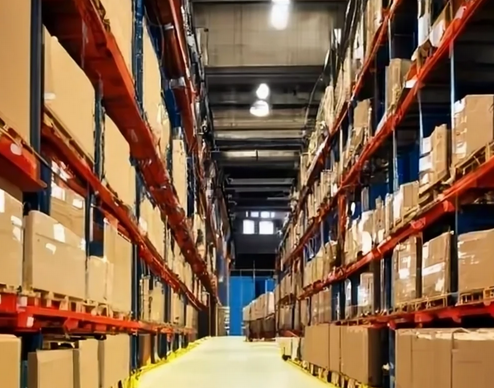The material handling industry is evolving rapidly, driven by technological advancements, automation, and changing customer expectations. Here’s a list of material handling trends that are expected to shape the future of the industry.
- Automation and Robotics: The adoption of automation and robotics in warehouses and distribution centers will continue to increase. Autonomous mobile robots (AMRs), automated guided vehicles (AGVs), and robotic pickers will streamline operations and improve efficiency.
- Artificial Intelligence (AI) and Machine Learning: AI-powered systems will be used for predictive maintenance, demand forecasting, route optimization, and quality control. Machine learning algorithms will enhance decision-making processes.
- IoT and Sensor Technology: The Internet of Things (IoT) and sensor technology will provide real-time visibility into warehouse operations, enabling better inventory management, equipment monitoring, and tracking of goods.
- Wearable Technology: Wearable devices like smart glasses and exoskeletons will enhance worker productivity and safety by providing real-time information and support for physically demanding tasks.
- Blockchain for Supply Chain: Blockchain technology will be used to improve transparency and traceability in the supply chain, reducing the risk of counterfeiting and enhancing trust among stakeholders.
- Voice and Augmented Reality (AR): Voice-directed picking systems and AR applications will optimize order fulfillment processes by providing hands-free instructions and improving order accuracy.
- Sustainability Initiatives: Eco-friendly material handling practices, such as energy-efficient equipment, recycling programs, and sustainable packaging, will become more prevalent to reduce the environmental impact of logistics operations.
- Collaborative Robotics (Cobots): Collaborative robots will work alongside human workers, enhancing productivity and safety. These robots are designed to interact safely with humans and assist with various tasks.
- 3D Printing: Additive manufacturing, or 3D printing, will enable on-demand production of spare parts and customized packaging, reducing lead times and inventory costs.
- Last-Mile Delivery Solutions: Innovations in last-mile delivery, including drone and autonomous vehicle delivery, will improve speed and efficiency, especially in the e-commerce sector.
- Warehouse Management Systems (WMS): Advanced WMS software will offer real-time tracking, data analytics, and predictive analytics capabilities to optimize warehouse operations.
- Energy-Efficient Equipment: The adoption of energy-efficient material handling equipment, such as electric forklifts and conveyors, will reduce operational costs and environmental impact.
- Predictive Maintenance: Condition-based monitoring and predictive maintenance solutions will minimize downtime by identifying equipment issues before they lead to failures.
- Safety Solutions: Enhanced safety systems, including collision detection, proximity sensors, and ergonomic improvements, will prioritize worker safety in material handling environments.
- Customization and Personalization: Demand for customized and personalized products will require more flexible material handling systems capable of handling diverse product configurations.
These trends reflect the ongoing transformation of the material handling industry as it embraces technological innovations and adapts to changing market dynamics. Staying informed about these trends and their potential impacts on your specific industry and operations can help organizations remain competitive and efficient in the evolving landscape of material handling.

